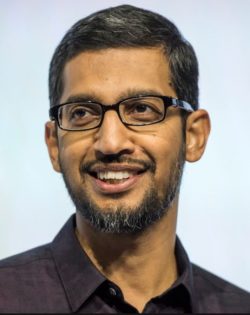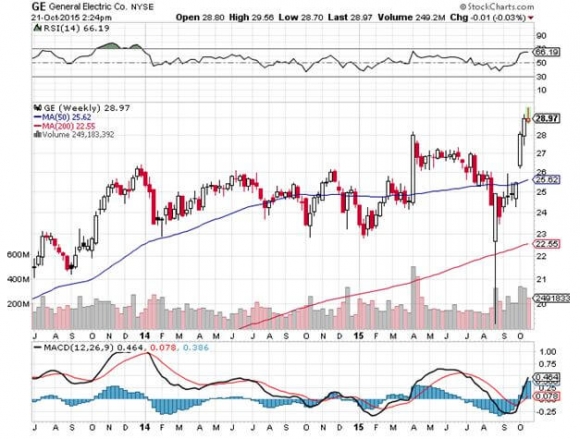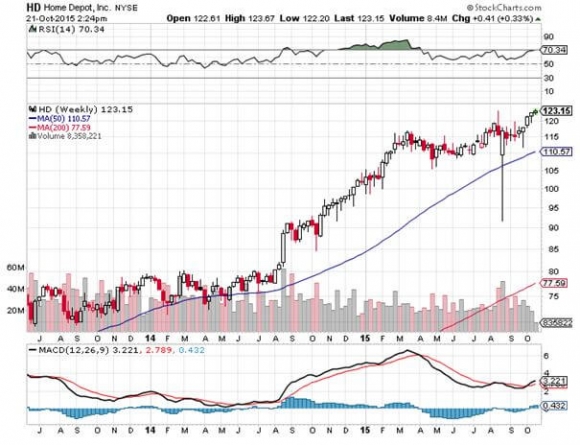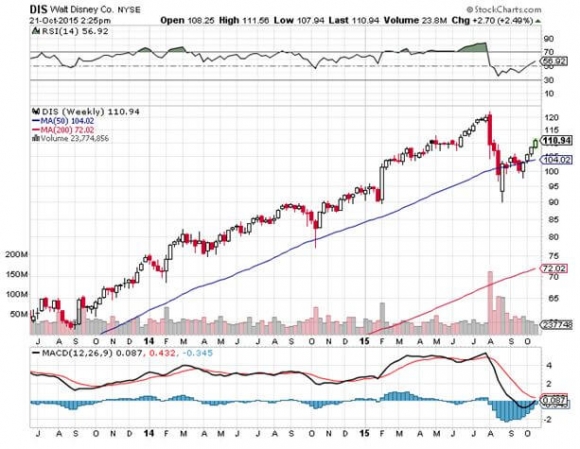Too far out over their skis.
For the first time in five quarters, Netflix (NFLX) was unable to eclipse the alpine level like expectations prognosticated by its own senior management.
Netflix and Amazon (AMZN) have been given luminary status at the Mad Hedge Technology Letter because the straight-line price action offers such agonizing entry points for investors, along with the best business growth models in the American economy.
Chasing this stock has usually worked out for the better, but leading up to the latest quarterly earnings report, Netflix started to scrunch up.
The firing squad loaded up its bullets and after Friday's close, shots were rained down on Netflix's parade as it failed to beat the only metric significant to Netflix investors - new subscribers.
The numbers were not even close.
Netflix fizzled out on its domestic subscriber's growth metric by 560,000, when 1.23 million new subscribers were expected.
International numbers succumbed to the inevitable, but less in percentage terms, failing to surpass the expected 5.11 million, only successfully adding 4.47 million new subscribers.
The 5.2 million adds out of the expected 6.3 million expected is the best news that has happened to Netflix in a long time if you are underinvested in this name.
Ravenous investors looking to jump on Netflix's bandwagon are licking their chops.
After-hours trading saw the stock tank, falling down the rabbit hole by almost 15%.
The stock had only recently been trading around an all-time high of $419. Fluffing their lines has given investors a much-awaited entry point into one of the creme de la creme growth stories in the vaunted tech sector.
Let's get a little more granular, shall we?
Even for high-flying tech stocks, the velocity of the price surges has put off many investors calling the stock "overbought."
Netflix shares were up 108% in 2018 before profit taking commenced before the earnings call. It was unusual to see Netflix intraday slide of 4%.
Investors smelled a rat.
It was only a matter of time before normal investors were finally given a chance to swiftly pile into this precious gem of a stock.
That time is now.
UBS analyst Eric Sheridan recently declared Netflix's growth story as "all priced in."
I don't buy it.
Yes, the shares got ahead of itself, but the Netflix narrative is still intact.
Over the earnings call, Netflix CEO Reed Hastings gushed about the current state of the company remarking that "fundamentals have never been stronger."
The bad news is that it missed on overzealous estimates; the good news is it added 5.2 million new subscribers.
Don't forget that in Q1 2018, Netflix beat total estimates by a herculean 920,000 subscribers, which is around what it missed by in Q2 2018.
The most recent quarter was overwhelmed by World Cup 2018 fever, with audiences migrating toward probably the most dramatic and exciting World Cup in history and the first to be streamed.
The most popular sporting event in the world gave Netflix a short-term kick in the cojones, delaying many new subscription sign-ups until after France lifted the trophy for the second time in its illustrious history.
The Twitter (TWTR) and Facebook (FB) numbers back up this thesis, experiencing explosive engagement and ad buying over the monthlong tournament boding well for their next earnings results.
Don't worry investors.
These eyeballs are just temporary.
The tournament offering a short-term bump to social media stocks clearly is just a one-off event that happens one summer out of every four.
Any recent profit taking will see the same investors eyeing a lower cost basis after this share dump.
Netflix won't be down for long.
Let's briefly review some of Netflix's cornerstone advantages:
The massive user migration from linear television to over-the-top content (OTT) led by cord-cutting millennials, responsible for a growing slice of domestic purchasing power.
The inherent advantages of a global over-the-top content (OTT) streaming model, applying massive scale with the cheap marginal cost of current technology.
The first-mover advantage that has allowed Netflix to have its own cake and eat it.
And the competition's laggardly response to Netflix eating its own cake.
Netflix CFO David Wells' take on the missed targets was "lumpiness" in the business and brushed it off like a bug crawling up your leg.
Hastings also chimed in about the increased competition shaping up and Disney (DIS), HBO, and other players finally getting their act together.
He mentioned there is room for multiple players in this industry, but they better not show up to the gunfight with a knife.
Netflix has been weaning itself from Disney's, Fox's and other third-party content for years, along with spending 50% more on marketing in 2018.
Ted Sarandos, chief content officer of Netflix, let it be known that 85% of new spending will be on original content in 2018.
Out of $8 billion earmarked for content in 2018, a colossal $6.8 billion is set to be splashed on in-house productions.
Compare this with the competition of Amazon, which plans to spend $4.5 billion on original content in 2018 and Hulu's plan to spend $2.5 billion in 2018.
Down the road, Netflix will have greater ability to finance its expensive content spend as it has flipped to a profit-making entity.
Amazon uses its AWS (Amazon Web Services) arm to fund its various subsidiaries.
The high level of quality content is reflected in the 40 Emmy nominations garnered by Netflix, in effect crushing stalwart HBO.
Netflix is aggressively courting Hollywood's A-list and poaching them in droves.
Proven content creators such as Ryan Murphy, Shonda Rhimes, Shawn Levy and Jenji Kohan are now on Netflix's payroll, and are a vital reason for the uptick in quality programming.
This successful harvest will result in added brand recognition and elevated prestige for current and future eyeballs.
Netflix will push out around 1,000 original programs in 2018. More than 90% of Netflix's subscribers habitually watch its vast portfolio of original programming.
The only way Netflix can be stopped is if it stops itself.
The pipeline is plush, and it is not all priced into the stock yet.
Next year could be the year India and Japan massage the bottom lines to greater effect, as Netflix double downs on the international arena.
Netflix's first original Indian series "Sacred Games" has been a winner, and its first original movie "Lust Stories" is creating a stir among avid Indian movie followers.
CEO Hastings has gone on record stating the "next 100 million" Netflix subscribers will derive from the land of Taj Mahal and chicken tikka masala.
Netflix has a lot of work to do to catch up with entrenched leaders Hotstar and Alphabet's (GOOGL) YouTube India.
About 800 million Indians have never been online before. The screaming potential India offers cannot be found elsewhere, especially with films historically, deeply embedded inside India's ancient culture.
Next month will see the release of "Ghoul," based on critically acclaimed work by authors Salman Rushdie and Aravind Adiga.
Slated for imminent release is also Mumbai Indians, a documentary about a top team in the locally obsessed Indian Premier League cricket tournament.
GBH Insights' internal research has found that Netflix is watched 10 hours per week in American households.
That number will inevitably grow as the quality of content goes from strength to strength for this first-rate company.
And how did Netflix's shock miss affect the Nasdaq (QQQ) on the next trading day?
It showed the resiliency and intestinal fortitude that has been a hallmark of the tech sector bull market.
The latest earnings result snafu is a surefire chance to finally have a little taste of Netflix. It will be back over $400 in no time.
________________________________________________________________________________________________
Quote of the Day
"If we continue to develop our technology without wisdom or prudence, our servant may prove to be our executioner," - said retired U.S. Army General Omar Bradley.

























